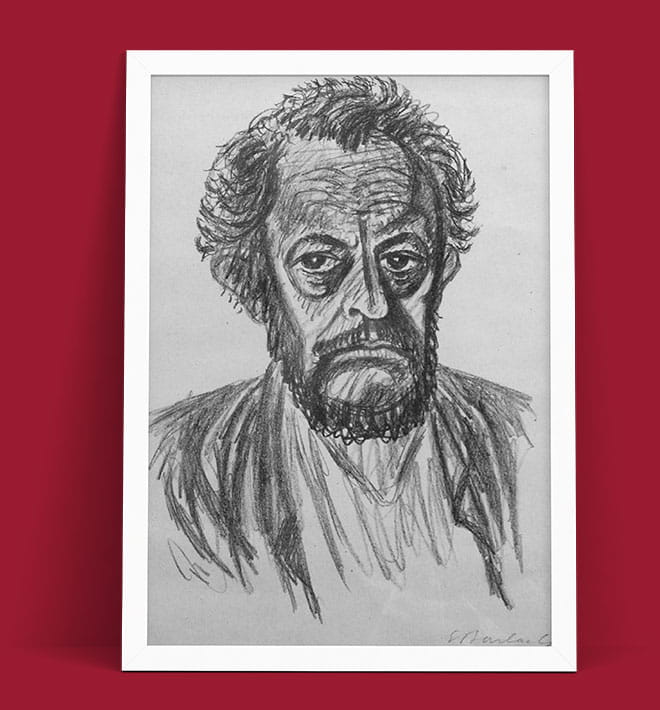Early Life and Education
Born on January 2, 1870, in Wedel, Holstein, Barlach was the eldest of four sons to physician Georg Barlach and Johanna Luise Vollert. Following his father's death in 1884, the family moved to Schönberg, where Barlach completed his secondary education. His artistic inclinations led him to the Gewerbeschule in Hamburg from 1888 to 1891, and subsequently to the Königliche Akademie der bildenden Künste in Dresden until 1895. During this period, he studied under Robert Diez and produced his first major sculpture, Die Krautpflückerin (The Herb Plucker). Furthering his education, Barlach spent time at the Académie Julian in Paris between 1895 and 1897, where he was exposed to various artistic movements, including Art Nouveau.
Artistic Evolution and Style
Initially influenced by Art Nouveau, Barlach's style underwent a significant transformation following a pivotal trip to Russia and Ukraine in 1906. The exposure to Russian peasantry and folk art deeply impacted him, steering his work towards a more expressive and spiritually resonant direction. This evolution is evident in his sculptures, which often depict human figures in contemplative or sorrowful states, characterized by simplified forms and profound emotional depth. His works are often described as "modern Gothic," reflecting a blend of medieval influences and contemporary expression.
Notable Works
Among Barlach's significant sculptures is "Das Wiedersehen" (The Reunion), created in 1930. This poignant piece portrays two figures in a tender embrace, symbolizing themes of empathy, compassion, and reconciliation. The sculpture transcends its biblical inspiration, resonating with universal human emotions.
In addition to his sculptures, Barlach was an accomplished draftsman. His drawings, often serving as preparatory studies for his sculptures, are celebrated for their expressive lines and emotional intensity. These works provide insight into his creative process and further demonstrate his mastery in capturing the human condition.
Literary Contributions
Beyond his visual art, Barlach was also a prolific writer. He authored several Expressionist dramas, including Die Sündflut (The Flood) in 1924 and Der blaue Boll (Squire Blue Boll) in 1926. These plays delve into themes of human existence, spirituality, and redemption, mirroring the depth and introspection found in his visual art.
Challenges During the Nazi Era
The rise of the Nazi regime brought significant challenges for Barlach. His works were labeled as "degenerate art," leading to the removal of many pieces from public collections and the prohibition of his artistic activities. Despite these adversities, Barlach continued to create until his death from heart failure on October 24, 1938, in Rostock, Mecklenburg. He is buried in Ratzeburg.
Legacy and Influence
Posthumously, Barlach's contributions have been recognized and celebrated. Institutions such as the Ernst Barlach Haus in Hamburg preserve and exhibit his works, ensuring his legacy endures. His exploration of existential themes and his distinctive style continue to resonate, securing his place as a pivotal figure in modern art.
























